Are you feeling more dust accumulation in your vents? Vent cleaning is an important factor for every home to live fresh and peacefully. Considering vent cleaning cost is also a factor that people are more likely to ask. Vent cleaning cost depends upon the size of your home. It also depends on how healthy your vents are.
Vent cleaning can be done once or twice a year if there exists any smoker in your home or people with allergies or asthma. People like these are more likely to get affected by the polluted air of home and that is why there always exists a need for vent cleaning. Vent cleaning cost can be somewhere between 350$-700$.
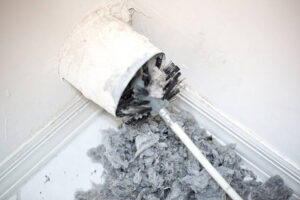 FACTORS THAT CAN AFFECT THE VENT CLEANING COST
FACTORS THAT CAN AFFECT THE VENT CLEANING COST
There are some factors that are considered while considering vent cleaning cost. They are:
- Quality of vents and additional repairs.
- Type of ductwork.
- The number of team members needed for cleaning the vents.
- Quantity of dirt accumulated in vents.
OTHER FACTORS AFFECTING VENT CLEANING COST
AMOUNT OF AIR DUCTS/FURNACES
If you have more than one furnace in your home, you are more likely to pay additional charges depending on the number of vents you have.
INSECTS AND RODENTS
To avoid any health problems, it is important to check if there are any insects or rodents in your vents. Dirty ducts with rodents and insects will also affect the vent cleaning cost.
MOLD REMOVAL
If there is a mold with mildew growth in your air ducts, It will cost from 4000$ to 6000$ because there are special chemicals and tools to remove mold with mildew growth.
ACCESSIBILITY
Most of the ducts can be accessed through utility rooms and basements. But if the ducts are difficult to access, It can add up to the cleaning cost.
CUSTOM DESIGNED VENTS
If your air ducts are custom-designed, It will add to the final cost because it will need special tools and techniques to complete the task.
VENT CLEANING COST PER VENT
Usually, each vent costs about 35$. You can check the overall vent cleaning home by multiplying the number of vents by 35.
ADVICE FROM DUCT GURUS
Our advice is simple: Avoid those lowball offers. Companies offering a brilliant low price on air duct cleaning might do more harm with no good. The fact here is that the common air duct cleaning for almost all homes costs between $300 and $500, together with the price troubled by factors like the size of the home, the volume of ducts in addition to their configuration. The average price for air duct cleaning is $35 per vent. So if the house has a total of 10 vents, the whole would be $350.
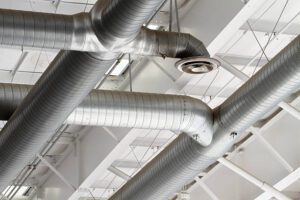 Here’s the condition with those $99 specials (we’ve actually seen them advertised as low as $49): What typically occurs in those scenarios would be the company offers an excellent price, usually such as a coupon, to go into the door. Once inside, they presently find other conditions — black mold is the type of scare for employees employed by unscrupulous contractors — or they struggle to upsell the homeowner on additional services. Those who are taken in by these air duct cleaning scams often pay upward of $600, even in the thousands.
Here’s the condition with those $99 specials (we’ve actually seen them advertised as low as $49): What typically occurs in those scenarios would be the company offers an excellent price, usually such as a coupon, to go into the door. Once inside, they presently find other conditions — black mold is the type of scare for employees employed by unscrupulous contractors — or they struggle to upsell the homeowner on additional services. Those who are taken in by these air duct cleaning scams often pay upward of $600, even in the thousands.
VENT CLEANING COST SCAMS
We’ve spoken with many homeowners who’ve been victimized by these scams. Even the ones who don’t succumb to the high-pressure techniques remain frequently wronged since these lowball companies are using inadequate equipment and tools — like handheld vacuums and drills — to accomplish the work. They quickly have the house, vacuuming out some vents, and are also gone in under 30 minutes. A legitimate air duct cleaning should take three or four hours to try and do, based on reputable duct cleaning businesses that I’ve spoken to.
Most of the good air duct cleaners use outdoor vented equipment, so all in the dust and debris they capture is vented and contained beyond the home. A duct cleaner who uses inferior equipment can cause more harm by agitating and releasing more dust to your home, or worse, damaging your ductwork.
VENT CLEANING RED FLAGS
If a company lets you know that you have mold inside your air ducts, that may be a red light. We recommend sending that company back before any efforts are done and achieving a qualified mold-testing firm from the market to your home to confirm that mold is present. If so, the tester can supply that information — and also a protocol for detaching the mold — to your separate mold confirmation firm to protect yourself from any conflicts.
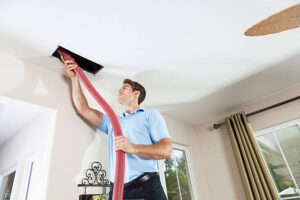 Unfortunately, the environment duct cleaning industry doesn’t have several regulations. Most states don’t have licensing requirements as air duct cleaners — so it’s vital that you do your research and hire a company with a capable reputation. Check online reviews and request referrals.
Unfortunately, the environment duct cleaning industry doesn’t have several regulations. Most states don’t have licensing requirements as air duct cleaners — so it’s vital that you do your research and hire a company with a capable reputation. Check online reviews and request referrals.
Ask potential air duct cleaning companies to offer you a written checklist of what exactly they will do. Of course, if you hire them, ask them to make sure that they will complete each task. Qualified air duct cleaners follow strict standards set because of the National Air Duct Cleaners Association and may be happy to provide you with their referrals. You can hire companies like DuctGurus They know the exact vent cleaning cost and will not scam you.
CAN YOU SAVE MONEY ON HVAC VENTS
Your ac, heat pump, or furnace probably utilizes a lot of energy. Heating and cooling are the reason half of the whole energy utilization in a typical house. For AC units and heat pumps using electricity generated in fossil-fuel-fired power plants, the sum you use at home could possibly be only a third of the entire. A question I get asked frequently is it’s OK to seal vents in unused rooms to spend less and will it reduce the vent cleaning cost? The answer may surprise you.
You’ll typically see plain grilles, but for the supply side, the spot that the conditioned air gets blown back into the house, most HVAC contractors install registers. It has a lever of some kind that allows you to adjust the louvers behind the grille.
You’d believe that since it’s adjustable, it ought to be OK to spread out or close it in your case, right?
THE BLOWER AND BLOWN
The blower within your HVAC product is the heart for distribution. It pulls air from the house with the return ducts and pushes it back into the house throughout the supply ducts. In high-efficiency systems, the blower is powered by an electronically commutated motor (ECM), which may adjust its speed to varying conditions. The majority of blowers, however, are from the permanent split capacitor (PSC) type, which is not a flexible speed motor.
In either case, the method is designed for the blower to push against some maximum pressure difference. That number is commonly 0.5 inches of the water column. If the filter gets too dirty or perhaps the supply ducts are extremely restrictive, the blower pushes against a greater pressure.
In the case of the ECM, a superior pressure may cause the motor to ramp up in an effort to maintain proper ventilation. An ECM is more efficient over a PSC motor under ideal conditions, but the way it ramps approximately work against higher pressure, you lose that efficiency. You still get the ventilation (maybe), but it really adds up to vent cleaning cost.
The PSC motor, conversely, help keep spinning but at lower speeds because pressure increases. Thus, higher pressure means less ventilation, and, as we’ll see, low ventilation can cause some serious problems.
The thing to remember is that no matter which kind of blower motor your HVAC system has, it is not good to push against a larger pressure.
CLOSED VENTS INCREASE PRESSURE
In a well-designed system, the blower moves mid-air against a pressure that’s no more than the maximum specified by the producer (typically 0.5 iwc). The ideal system has low duct leakage.
The typical system, however, is a lot from ideal. Although most systems are rated for 0.5 iwc, the National Comfort Institute, containing measured static pressure and air movement in a lot of systems, finds the normal system to become pushing against a static pressure around 0.8 iwc. Now we’re wanting to address the question of closing vents.
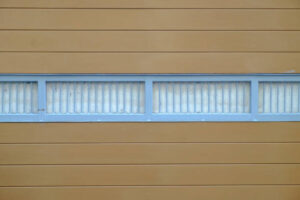 When you commence closing vents in unused rooms, you’re making the duct system more restrictive. Most homes don’t have sealed ducts either, hence the higher pressure inside the duct system indicates more duct leakage, as shown below.
When you commence closing vents in unused rooms, you’re making the duct system more restrictive. Most homes don’t have sealed ducts either, hence the higher pressure inside the duct system indicates more duct leakage, as shown below.
The ducts will undergo more pressure if more ducts are closed.
HEAT
In addition to moving air, your air conditioning equipment, heat pump, or furnace is usually cooling or heating that air that flows with the system. The air passes more than a coil or heat exchanger and either give up the heat or registers heat.
In a fixed-capacity system, the level of heat the coil or heat exchanger can go absorbing or letting go of is fixed. When the ventilation goes down, less heat exchange happens with all the air. As a result, the temperature in the coil or heat exchanger changes.
If air-flow is low, it’ll dump less heat into the coil in summer, plus the coil could possibly get colder. If there’s water vapor rising, the condensation about the coil will start freezing. You can end up with a block of ice. And ice within the coil is actually bad for ventilation.
It’s also damaging the compressor as not all with the refrigerant evaporates and liquid refrigerant makes its sources that are to the compressor. If you need to purchase another new compressor, this is an excellent way to do it. All these factors affect the overall vent cleaning cost. DuctGurus are providing free tips to provide you with ease of choosing the right duct cleaners by whom you can get advice on vent cleaning cost.
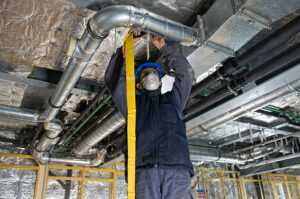
It’s vital that roughly the identical amount of air moves through supply ducts as return ducts, as a way to maintain neutral air pressure in rooms. If supply air doesn’t have a way to come back to return ducts, it can leak out of the home through cracks and openings inside the home’s outer envelope. In the winter, meaning you’re losing heat energy out, and rooms won’t stay warm for very long.
For this reason, it’s vital that house construction doesn’t scrimp on return vents and ducts. Ideally, there needs to be a return register or vent in every single room in which a supply register is found. If that’s difficult, there must be easy airflow between rooms, via such strategies as air pass-through grilles indoors or jumper ducts in ceilings.
For information on optimizing the performance with the ductwork, you can check more techniques and guides by clicking here.
